
Painting by Claude Monet “Water Lilies” is a dazzling and challenging works by the artist on the theme – water lilies, which were written in the period 1914-1917 year.
The amazing 2-square meter canvas was painted freer and bolder than the earlier versions to the year 1903-1908.
An artist in the painting “Water Lilies” slightly deviated from his revolutionary idea of “description” of nature, and gave his work a kind of abstract painting. In this amazing composition Monet displayed a rounded islands of yellow and pink water lilies, which are located on the green, purple and dark blue surface of the water.
Painter tried to fully focus on the isolated water surface covered with water lilies, while Monet completely rejected the generally accepted rules of composition, and gave up the concept – the horizon. Because water lilies suddenly cut off the edges of the canvas, there is an impression that the work is unfinished and is only a particle of something big.
The use of color in a composition.
– Multi-layer water. During the painting, the artist has repeatedly adding a new layer of water, after the establishment of the leaves of water lilies. Therefore, we can see in the careless and rough brush strokes, overlapping loop leaves, violet and mauve shades that fill the space between the two water lilies.
– A sense of movement and dynamics give the vertical strokes of purple and green. This Monet gave a reflection on the surface of the water and the feeling of a large number of tangled weeds and roots under water.
– Some parts of the empty, not a filled canvas, give the film a sense of spontaneity, of which the work seems unfinished.
– Water lilies – this is the main element of the picture. Monet wrote them thick and short brush strokes of pink and yellow. Thus, enhancing the impression bulk flowers.
 Water Lily Pond by Claude Monet
Water Lily Pond by Claude Monet Water Lilies by Claude Monet
Water Lilies by Claude Monet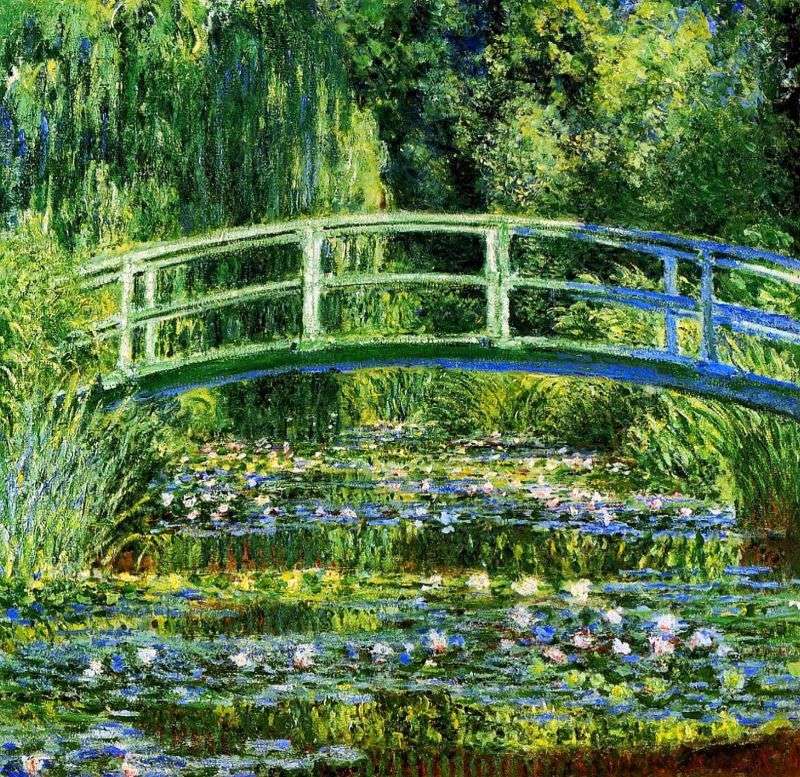 Water Lily Pond by Claude Monet
Water Lily Pond by Claude Monet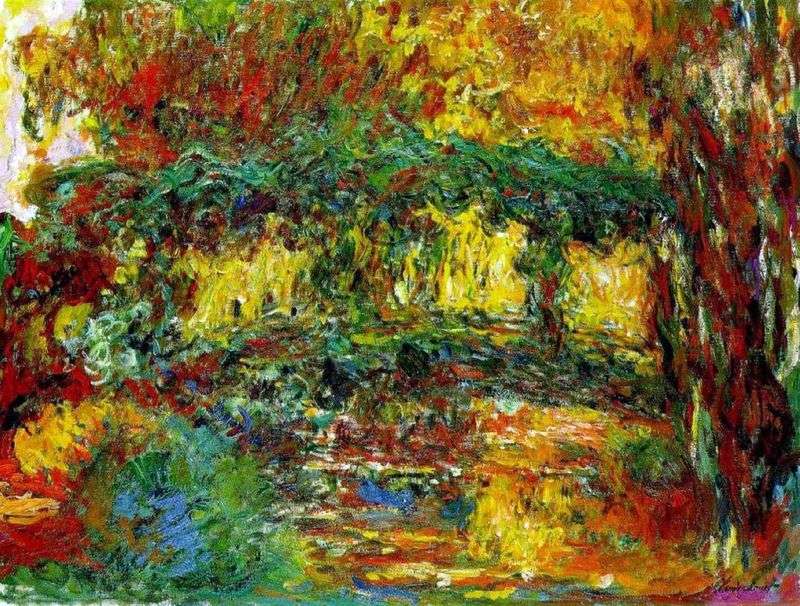 Japanese Bridge by Claude Monet
Japanese Bridge by Claude Monet Agapanthus by Claude Monet
Agapanthus by Claude Monet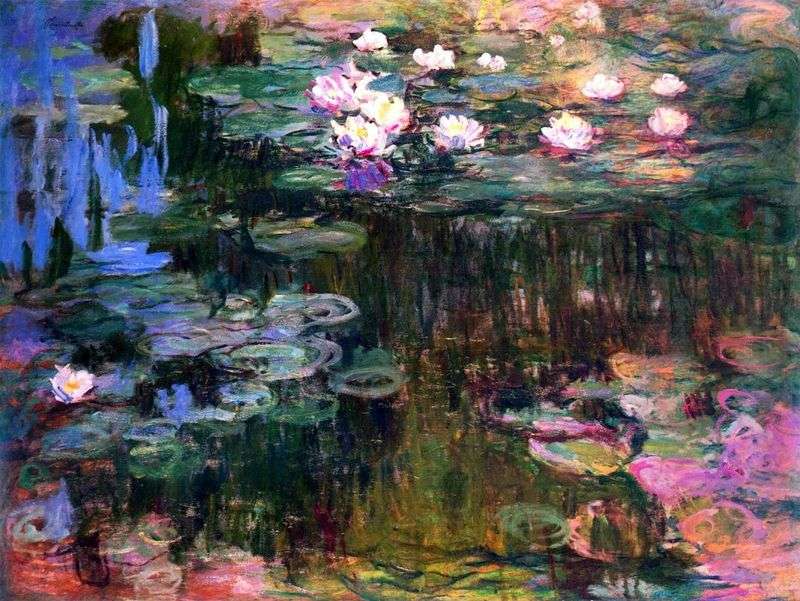 Water Lilies by Claude Monet
Water Lilies by Claude Monet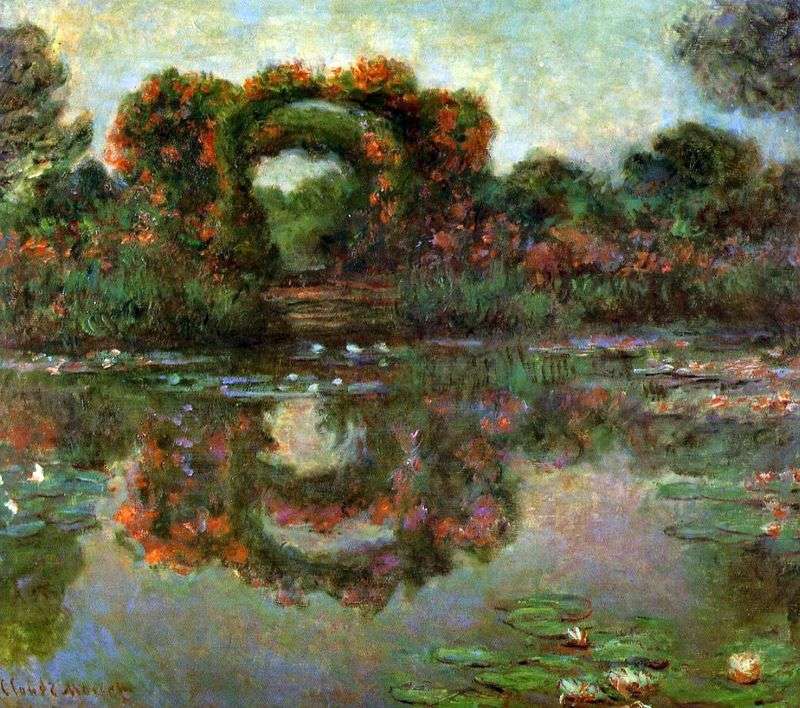 Arch in flowers, Giverny by Claude Monet
Arch in flowers, Giverny by Claude Monet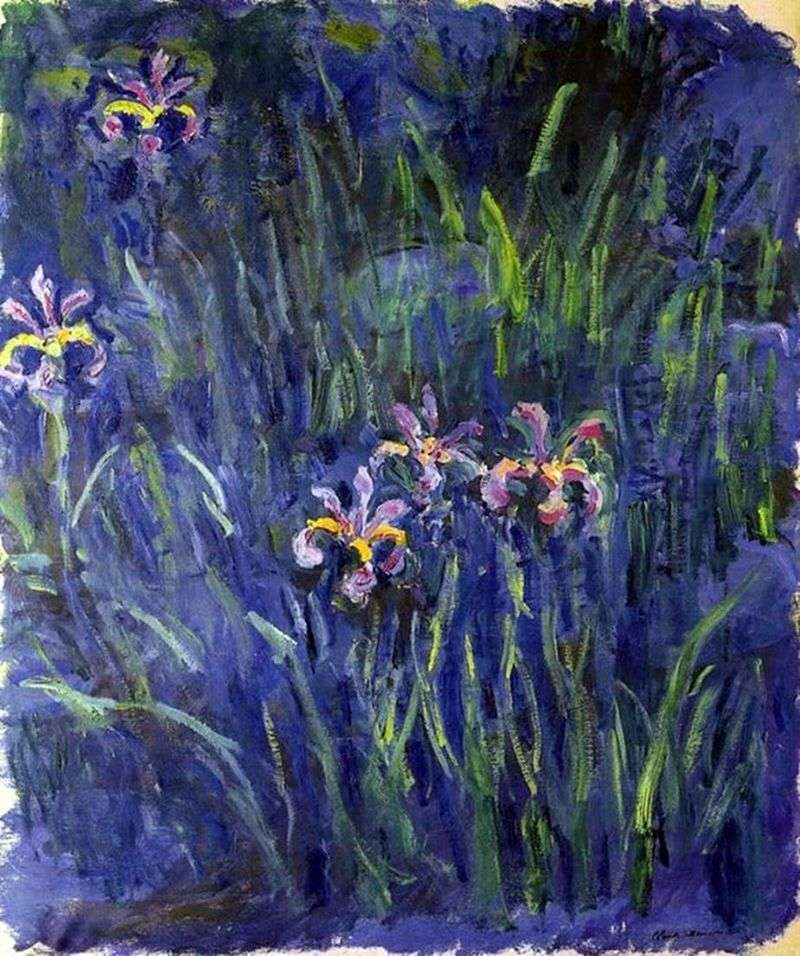 Irises by Claude Monet
Irises by Claude Monet